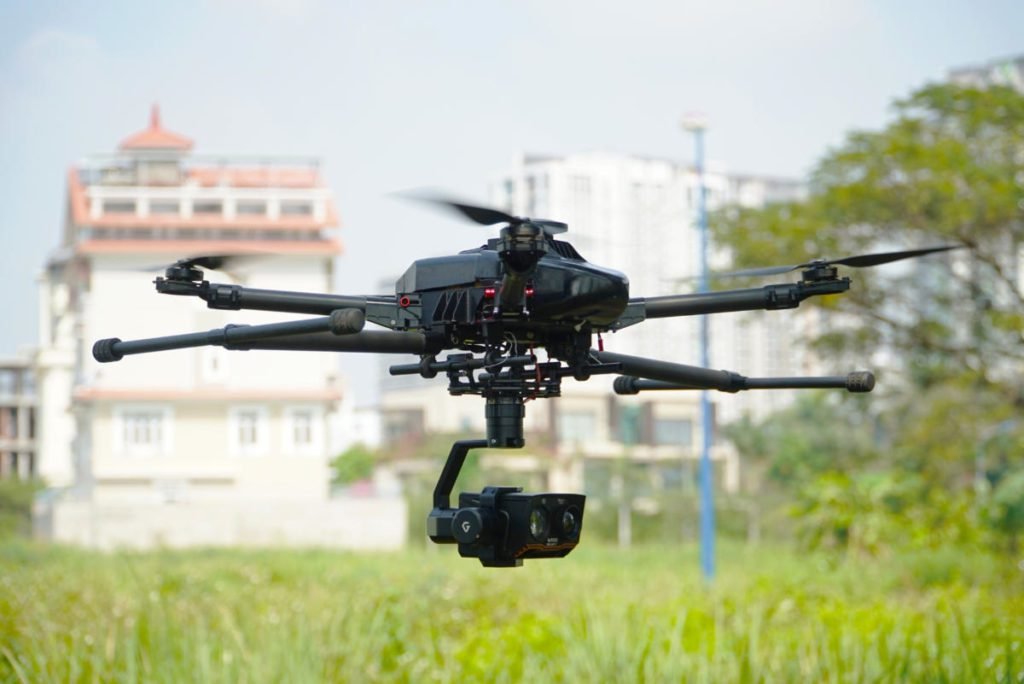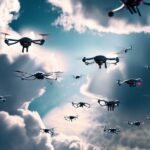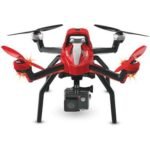Introduction
Overview of Drone Night Vision
Drone night vision has emerged as a groundbreaking technological advancement that enhances the capabilities of aerial surveillance and reconnaissance, especially in low-light conditions. These drones, equipped with advanced imaging systems, allow operators to capture clear, detailed images and videos even when the sun goes down. Imagine you’re tasked with monitoring a large outdoor event during the night. Traditional cameras might struggle to provide usable footage, but a drone with night vision can glide over the crowd, providing real-time visuals that help ensure safety. Night vision technology primarily falls into two categories: low-light (image intensification) and thermal imaging.
- Low-light sensors: Amplify existing light sources, allowing for better visibility in dark environments.
- Thermal sensors: Detect heat emitted from objects, making them particularly useful for spotting people or animals in complete darkness.
The combination of these technologies allows for unparalleled flexibility in remote aerial operations.
Importance of Drone Night Vision
The importance of drone night vision cannot be overstated. In many scenarios, situational awareness and rapid response can make a significant difference between success and failure. Here are several reasons why night vision capabilities are critical:
- Enhanced Safety: Law enforcement and emergency responders rely on drones equipped with night vision for mission-critical operations, such as searching for individuals lost in the wilderness or monitoring criminal activity after dark. A drone equipped with night vision gives officers a clear advantage, allowing them to assess a scene more effectively and make informed decisions.
- Improved Efficiency: In search and rescue operations, time is of the essence. Drones can quickly cover vast areas, providing real-time intelligence to teams on the ground. For instance, a local rescue team used a drone with thermal imaging to locate a missing hiker in minutes, a task that would have taken hours on foot.
- Data Collection: Industries like agriculture and environmental monitoring are utilizing night vision drones to collect data without disturbing wildlife. By using these drones at night, farmers can efficiently monitor crop health and assess water levels, which can lead to better yields.
- Reduced Risk: Using drones reduces the need for personnel to engage in potentially dangerous nighttime operations, such as searches in remote or hazardous terrains.
In summary, drone night vision is reshaping how we approach security, safety, and efficiency in various sectors. Whether it’s tracking wildlife, conducting infrastructure inspections, or enhancing public safety, the adoption of drone night vision is paving the way for smarter solutions that operate seamlessly in low-light conditions. The next section will delve deeper into how this remarkable technology functions, so stay tuned!
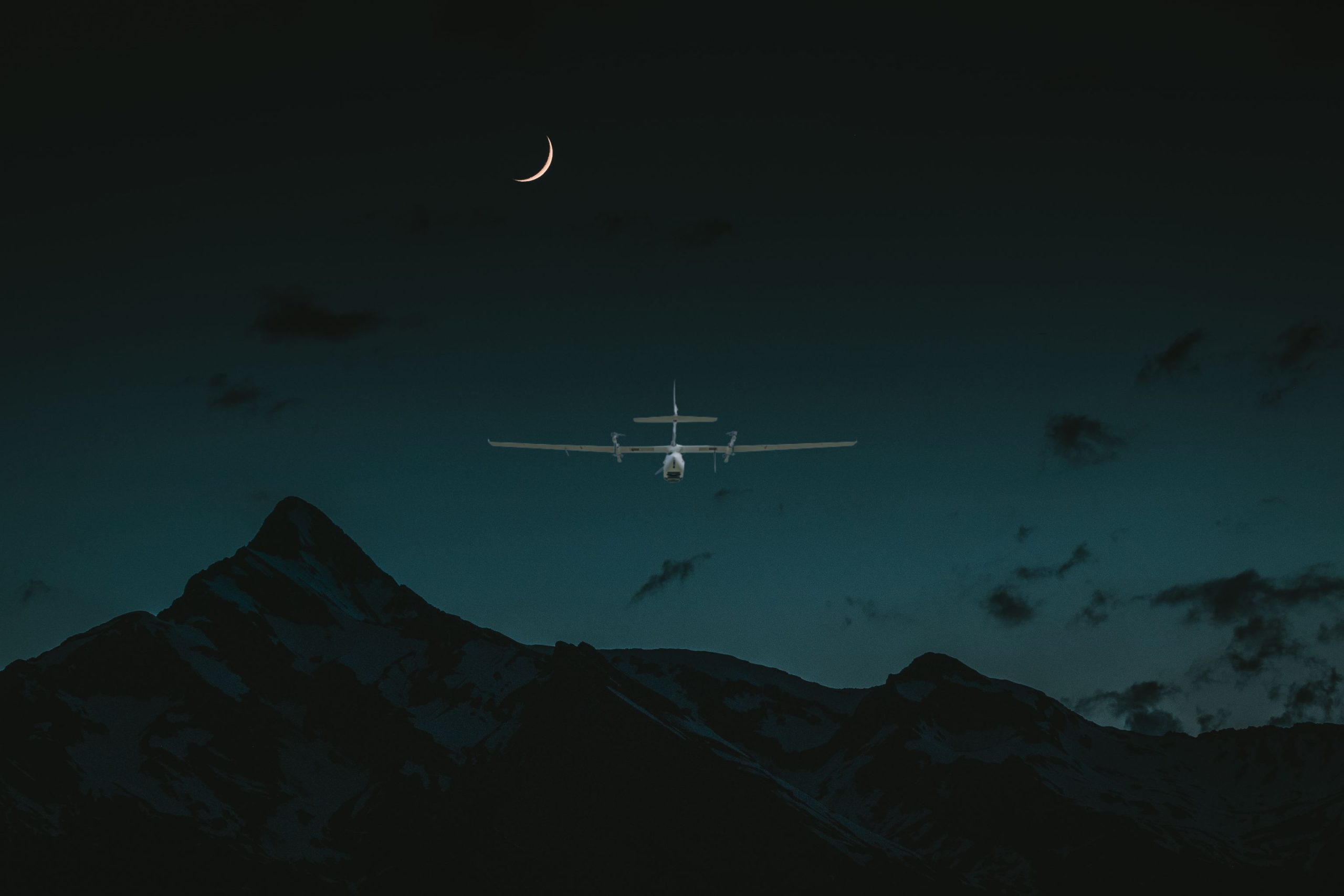
How Drone Night Vision Works
Technology Behind Drone Night Vision
Understanding how drone night vision works is essential to appreciating its incredible capabilities. At the heart of this technology are specialized sensors that enhance visibility in environments with minimal or no light. These sensors transform what the human eye cannot see into actionable, visible data.
- Image Intensification: This technique amplifies minimal ambient light (from the moon, stars, or artificial sources) to create a clearer image. The camera captures the faint light, boosting it through a series of electronic processes. The result is a bright, clear image that allows operators to see well into the dark.
- Infrared Imaging: This technology captures the heat emitted by objects, making it particularly useful in complete darkness. Drones equipped with infrared sensors can create detailed thermal imaging that helps to identify people or animals by their body heat. Imagine a forest at night; while it may be pitch black for the human eye, a thermal drone can still pick up the warm glow of heat signatures.
- Integration with GPS and Stabilization Systems: To ensure smooth flight and accurate data retrieval, night vision drones often integrate Global Positioning System (GPS) technology and gyroscopic stabilization. These systems work together to maintain steady flight, even in tricky weather conditions or during motion, providing clear imagery that truly enhances situational awareness.
Types of Night Vision Sensors
There are primarily two types of night vision sensors, each serving different purposes. Knowing which type is suitable for your needs can optimize the use of drone technology.
- Low-Light Sensors:
- Functionality: These sensors amplify available light, which creates clear visuals in dark settings without completely relying on thermal heat signatures.
- Applications: Digital cameras that feature low-light capabilities can be invaluable for search and rescue missions, wildlife monitoring, and security surveillance. For instance, during a nighttime search for a missing person, these cameras can help spot reflective surfaces or movement.
- Thermal Imaging Sensors:
- Functionality: They operate on a completely different principle; instead of relying on light, they detect heat emitted by objects.
- Applications: Ideal for locating persons in distress, detecting fires, and assessing energy efficiency in buildings. For example, fire departments often employ thermal drones during nighttime operations to locate hotspots in burning structures.
In summary, the sophisticated technologies behind drone night vision, primarily image intensification and thermal imaging, revolutionize how we perceive our surroundings in low-light conditions. Understanding these technologies allows drone operators to select the right tools for their specific needs. The next section will explore the numerous benefits of utilizing drone night vision across various fields, so keep reading!
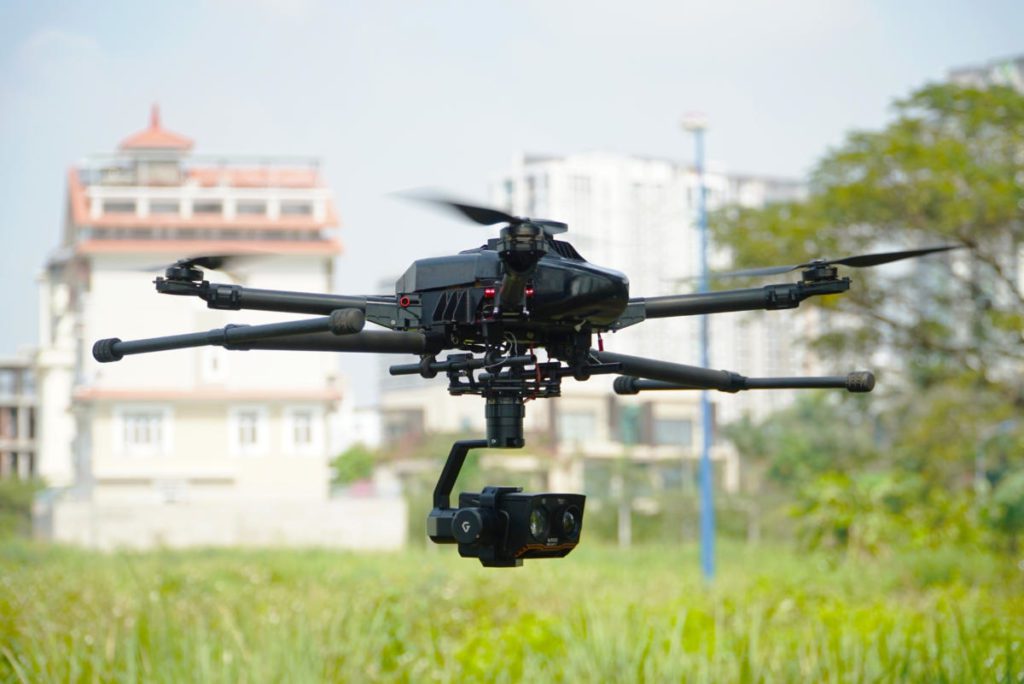
Benefits of Using Drone Night Vision
Improved Surveillance Capabilities
Using drones equipped with night vision technology significantly enhances surveillance capabilities across various sectors. One of the most compelling advantages is the ability to monitor vast areas during low-light conditions without compromising quality or detail. Imagine you’re tasked with ensuring security for a large outdoor festival. As the sun sets, traditional security methods may falter. This is where night vision drones shine. Consider these benefits:
- Wide Coverage: Drones can cover large areas quickly. For instance, a single drone can patrol a city park, providing real-time visuals of the environment, helping security teams spot potential issues before they escalate.
- Deterrent Effect: The mere presence of a drone can deter criminal activity. Knowing that a drone is watching can dissuade would-be offenders, leading to a more secure environment for everyone involved.
- Reduced Blind Spots: With the ability to fly at various altitudes and angles, drones eliminate blind spots that are common with stationary cameras. For example, if someone is lurking behind trees or obstacles, a night vision drone can easily adjust its position to capture any suspicious behavior.
- Cost Efficiency: Deploying drones for surveillance can often prove more cost-effective than hiring additional personnel to conduct ground patrols, especially in expansive areas.
In summary, improved surveillance capabilities offered by drone night vision technology not only enhance security measures but also ensure rapid response to incidents, making it a vital tool in today’s safety landscape.
Enhanced Search and Rescue Operations
When it comes to search and rescue operations, every second counts. Drones equipped with night vision technology have proven to be invaluable in locating missing persons or assessing emergency situations in the dark. Here’s why drone night vision elevates search and rescue missions:
- Rapid Area Coverage: Imagine you’re part of a search team looking for a hiker lost in the woods at night. A drone can cover up to several kilometers in a short time, scanning large areas that would otherwise be impossible to access quickly on foot.
- Heat Detection: Thermal imaging drones can pick up the heat emitted by human bodies, even when they’re obscured by foliage or terrain. For example, a rescue team deployed thermal drones to locate a missing child, successfully finding them within minutes in an expansive wooded area.
- Operational Flexibility: Drones can be utilized in various environmental conditions—mountains, forests, or even urban landscapes. This flexibility allows search teams to use night vision capabilities tailored to the landscape, significantly enhancing their effectiveness.
- Safer Operations: Utilizing drones reduces the risk associated with nighttime search missions, keeping rescuers out of potentially hazardous environments.
By integrating drone night vision into search and rescue operations, organizations can improve efficiency, safety, and success rates. As we delve into the next section, we’ll explore what factors to consider when selecting a drone with night vision capabilities, helping you make an informed choice for your needs!
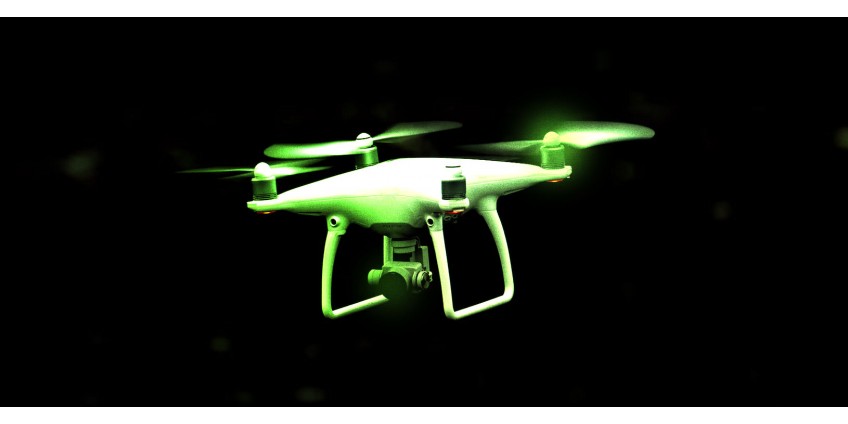
Factors to Consider When Choosing a Drone with Night Vision
Resolution and Image Quality
When selecting a drone with night vision capabilities, one of the most critical factors to consider is the resolution and overall image quality of the camera. After all, what good is a drone if the visuals it captures are blurry or unclear, especially in low-light conditions? Resolution refers to the amount of detail the camera can capture. Higher resolution means crisper images and finer details. Here’s what you should keep in mind:
- Megapixels Matter: Look for drones that offer higher megapixel counts. Generally, a drone with at least 12MP is a good starting point for quality imagery. A drone with 20MP or more will give you even better detail, which is crucial when identifying objects or individuals from a distance.
- Low-Light Performance: Not all cameras are created equal in terms of low-light performance. Some drones are specifically designed for nighttime use and possess larger sensors that better capture light, leading to clearer images. Reading reviews or watching comparisons can help you gauge how well a drone performs in challenging lighting.
- Optical Zoom: Some drones come equipped with optical zoom capabilities, allowing you to get closer to a subject without moving the drone itself. This means you can maintain the quality of the image while capturing more detail in distant targets. If monitoring security or conducting surveillance, this feature can be a game-changer.
In a personal example, during a recent night-time aerial photography session, I noticed a significant difference in image clarity between two models—one with standard low-light capabilities and another with enhanced sensors. The latter provided stunning shots, while the former struggled, showing the importance of investing in quality.
Range and Battery Life
Another essential factor to consider when choosing a drone with night vision is its range and battery life. Both of these elements can significantly impact your mission’s success, especially when operating in expansive areas or remote locations.
- Flight Range: Most drones have a specified operational range within which they can transmit video and images back to the controller. Aim for a drone that offers a decent flight range; generally, a direct range of at least 1 to 2 kilometers is ideal, ensuring you can cover extensive areas without losing connectivity.
- Battery Life: Drones come with varying battery capacities, which directly affect how long they can stay airborne. For nighttime operations, longer battery life is particularly crucial. Aim for drones that offer at least 20 to 30 minutes of flight time; however, some high-end models may provide up to 40 minutes or more. The last thing you want is for your drone to lose power while you’re in the middle of a critical mission!
- Planning for Extended Missions: If you plan on conducting operations that last several hours, consider investing in additional batteries or a drone that supports fast battery swapping.
In conclusion, when choosing a drone with night vision capabilities, prioritize resolution and image quality alongside range and battery life. These factors collectively ensure you can capture quality footage, operate efficiently, and complete your tasks safely. Next, we will delve into the legal considerations you need to be aware of before flying your night vision-equipped drone. Stay tuned!
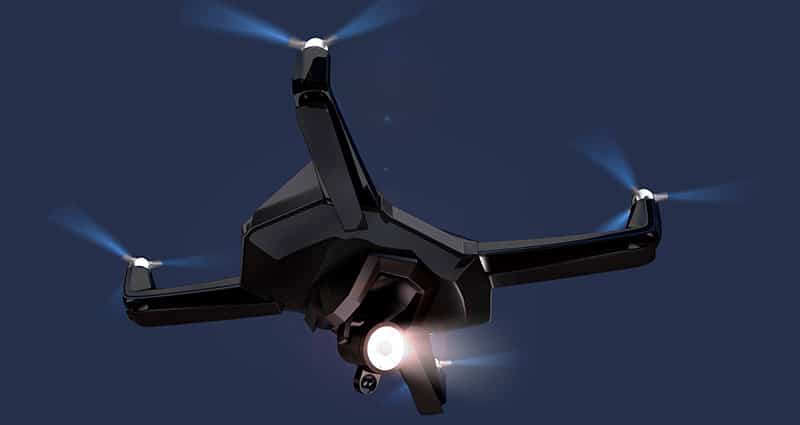
Legal Considerations for Using Drones with Night Vision
Regulations and Restrictions
When it comes to operating drones, particularly those equipped with night vision capabilities, it’s essential to be aware of the legal landscape surrounding their use. Regulations vary significantly by country and even within different states or regions, so knowing what applies to you can save you from hefty fines or legal trouble down the line.
- Licensing: Most countries require drone operators to have a valid pilot’s license, especially for commercial uses. For instance, in the United States, the Federal Aviation Administration (FAA) mandates that commercial drone pilots pass the Part 107 certification test. This ensures that pilots understand the rules and responsibilities that come with operating drones safely.
- No-Fly Zones: Many regions have designated no-fly zones where drones are prohibited altogether. These often include airports, military bases, and certain urban areas. Before you launch your drone, check local regulations to ensure that you’re not in restricted airspace. Utilizing apps or websites designed for drone pilots can help pinpoint these zones quickly.
- Altitude Limits: Most regulations restrict altitudes to a maximum of 400 feet above ground level. Keeping within these limits is not only a legal requirement but also a safety measure to avoid collisions with manned aircraft.
- Night Flight Rules: Flying at night is typically subject to specific regulations. In many regions, night flying is allowed only if you have proper night-flying certification and if your drone is equipped with anti-collision lights. Always check the local laws before planning night missions, as violations can result in severe penalties.
In my experience, understanding these regulations has been crucial for safely operating my drone. At a recent outdoor event, a fellow pilot almost launched into a restricted area but remembered to check his app, avoiding potential legal issues.
Privacy Concerns
The use of drones with night vision capabilities can stir up privacy concerns among the public, and for good reason. As drones become more prevalent, it’s important to navigate these ethical waters carefully to maintain trust and avoid conflicts with the community.
- Informed Consent: When using drones for activities such as surveillance or gathering data, consider obtaining informed consent from individuals who may be recorded. This is especially important in residential areas, where people may feel uncomfortable with being monitored without their permission.
- Data Protection: Ensuring that the data and footage collected are stored and used responsibly is crucial. Make sure to adhere to guidelines for data protection, particularly if the drone is used for commercial purposes. Clear policies on how data will be stored, shared, or utilized can help mitigate concerns and maintain public trust.
- Community Engagement: Engaging with the community you intend to operate in can significantly alleviate privacy concerns. Hosting informational sessions or simply explaining your intentions can foster goodwill and educate others on the positive uses of drone technology.
In summary, understanding the legal regulations and addressing privacy concerns are essential for responsible drone operation, particularly with night vision capabilities. Taking the time to navigate these issues not only protects you but also reinforces the positive role drones can play in various sectors. In the following section, we’ll explore best practices for operating drones with night vision, ensuring you get the most out of your aerial technology while remaining compliant and respectful. Stay tuned!

Best Practices for Operating Drones with Night Vision
Training and Certification
Operating a drone, especially one equipped with night vision capabilities, requires a certain level of skill and understanding. It’s not just about flying; it’s about making responsible decisions that ensure safety and compliance. Therefore, investing in proper training and certification is essential.
- Enroll in a Training Program: Many organizations offer courses specifically focused on drone operation. Look for programs that cover the nuances of flying at night and using night vision technology. Having a structured educational experience can make a world of difference. I remember when I took a specialized course; it not only bolstered my confidence but also introduced me to advanced techniques that I still employ today!
- Obtain Certification: As mentioned earlier, in the U.S., you need to possess a valid Part 107 Remote Pilot Certificate for commercial drone operations. Be sure to familiarize yourself with any additional requirements for night flying. This typically includes passing a test that covers topics such as airspace classifications, weather issues, and operational limits.
- Practice Night Techniques: After you’ve completed your training, practice flying in typical night environments. You can simulate night conditions during twilight to acclimate yourself to reduced visibility. This way, when the actual moment arises, you’ll be more prepared.
- Stay Informed: Regulations and technologies are always evolving. Joining local drone clubs or online communities can help you stay updated with new laws, equipment, and best practices. Engaging with fellow drone enthusiasts can provide valuable insights and tips you might not find in formal training.
Maintenance and Calibration Tips
Taking care of your drone is integral to successful operations, especially when you’re using it in challenging night conditions.
- Regular Maintenance: Make it a habit to perform routine checks of your drone. This includes inspecting the propellers, batteries, and cameras for any wear and tear. For instance, I always clean my drone after flights, especially after being exposed to dust or moisture; that prevents any build-up that may affect performance.
- Battery Care: The battery is your drone’s lifeblood, especially during night operations when flight time is critical. Ensure you charge and store batteries correctly, following the manufacturer’s guidelines. Avoid letting them drain completely, as this can lead to reduced capacity over time.
- Calibration Checks: Drones often require calibrating before a flight to maintain accurate readings and ensure stable navigation. Regularly check the gyroscope, compass, and camera sensors. It’s a good idea to perform these calibrations whenever there’s a significant change in the environment or immediately before flying at night.
- Software Updates: Always keep the drone’s software and any associated apps updated. This can enhance functionality and improve safety features. Manufacturers often release updates that may include important fixes or new capabilities for operating in low-light conditions.
In conclusion, adhering to best practices for training, certification, maintenance, and calibration will significantly enhance your flying experience and increase the overall effectiveness of your drone with night vision capabilities. These measures not only ensure compliance and safety but also empower you to make the most out of this incredible technology. Next, we’ll dive into some popular drone models that incorporate advanced night vision capabilities, helping you make informed decisions for your future purchases!

Popular Drone Models with Night Vision Capability
DJI Mavic 2 Enterprise Dual
The DJI Mavic 2 Enterprise Dual is a standout choice when considering drones with night vision capabilities. This impressive model packs a lot of features into a compact design, making it perfect for both professionals and enthusiasts alike. Here’s what makes it so special:
- Dual-Sensor System: The Mavic 2 Enterprise Dual features a unique combination of a 4K camera and a thermal imaging sensor. This means you can switch between clear visual imagery and thermal detection, which is incredibly useful in various applications from search and rescue to inspections. The ability to quickly change between these modes can be a lifesaver in situations that require immediate assessment.
- Advanced Flight Features: With a flight time of up to 31 minutes, you have ample time to cover large areas or conduct thorough inspections. The Mavic 2 Enterprise Dual also boasts impressive range capabilities, allowing it to operate up to 8 kilometers away from the controller.
- Built-In Spotlight and Beacon: Its built-in spotlight is perfect for illuminating dark areas during nighttime missions, while the strobe light enhances visibility and safety. I recall using this feature during a community event—being able to spotlight specific areas helped in gathering safety details effectively without disturbing the crowd.
- Smart Features: The drone supports smart features like Waypoints and an adjustable zoom, enhancing your operational capacity. It also comes with DJI’s FlightHub, allowing for real-time monitoring and mission planning.
Yuneec H520
Another excellent option for those seeking night vision capabilities is the Yuneec H520. This drone is specifically designed for commercial applications, combining robust performance with professional-grade features.
- Thermal and 4K Camera: Similar to the Mavic 2 Enterprise Dual, you can equip the Yuneec H520 with thermal imaging capabilities, allowing operators to conduct night operations efficiently. The thermal camera can also detect heat signatures, making it an invaluable tool in search and rescue scenarios or industrial inspections.
- Sturdy Design: One of the standout features of the H520 is its rugged design, which makes it resilient against adverse weather conditions. This robustness is crucial for night missions where visibility and environmental factors can be challenging.
- Intuitive Control: The drone features a user-friendly interface, making it easy to switch between different camera modes and settings. The ST16S Ground Station Controller offers an integrated touchscreen for seamless control, making it ideal for those unfamiliar with drone technology.
- Long Flight Times: With an impressive flight time of around 25 minutes, the H520 is reliable for extended flights, allowing enough time to cover substantial areas for inspections or monitoring efforts.
In summary, both the DJI Mavic 2 Enterprise Dual and Yuneec H520 stand out as top choices for drones with night vision capabilities. Depending on your specific needs—whether it’s for public safety, industrial inspection, or search and rescue—each offers unique features that can enhance your operations significantly. The next section will cover tips for capturing stunning footage using these advanced drones, so keep reading!

Tips for Capturing Stunning Footage with Drone Night Vision
Adjusting Settings for Low-Light Conditions
Capturing stunning footage at night takes a bit of finesse and understanding of your drone’s camera settings, particularly when using night vision technology. Here are some tips to help you get that eye-catching imagery:
- Understand ISO Settings: In low-light conditions, adjusting the ISO is crucial. A higher ISO will make your camera more sensitive to light, allowing you to capture brighter images. However, be cautious; while increasing ISO can provide better visibility, it can also introduce noise into your footage, making it grainy. Finding the right balance is key. I often start with an ISO of around 800 and adjust from there based on the results I see.
- Shutter Speed Adjustments: Slower shutter speeds can help gather more light, but they can also cause motion blur if the drone moves too much. It’s essential to find a balance between capturing enough light and keeping your footage sharp. A general rule is to set your shutter speed to double your frame rate (e.g., if recording at 30fps, try a shutter speed of 1/60). However, if photographing static scenes, you can experiment with slower speeds to enhance brightness.
- White Balance Settings: The colors in your night shots can easily become distorted if the white balance is not correctly set. Using custom white balance settings instead of automatic adjustments can help maintain the colors in your footage. Play around with the Kelvin scale (typically setting it between 3000K-4000K for nighttime captures) to see which setting captures the scene best.
- Use Filters: If your drone supports it, consider using ND (Neutral Density) filters, which can help manage the light entering the lens. ND filters are excellent for reducing glare and improving image quality during nighttime operations.
By adopting these adjustments, you’ll be on your way to creating footage that not only looks great but also effectively communicates the story you want to tell.
Planning Night Flight Missions
Effective planning is paramount when conducting night flights. It not only ensures safety but also maximizes your chances of capturing great footage. Here are some strategies to consider:
- Scout Locations: Before flying, familiarize yourself with the location during the day. Knowing where potential obstacles or hazards are (like trees, buildings, or power lines) can make a world of difference when you’re flying in the dark. I once made the mistake of flying too close to a tall building I hadn’t scouted—planning ahead can significantly reduce risks!
- Check Weather Conditions: Nighttime can bring variable weather conditions. Clear skies are essential for optimal night shooting, so always check the forecast. Avoid flying in fog, rain, or high winds, as these can hinder visibility and complicate control.
- Create a Flight Plan: Outline your mission objectives. Determine the specific shots you want to capture and the paths your drone should take to achieve them. This helps streamline the process and ensure you’re using your flight time effectively.
- Test Run in Low Light: Prior to a significant night mission, conduct a short test run in low-light conditions. This helps you adjust settings and check battery levels, giving you peace of mind when it’s time for the real shoot.
By adjusting your camera settings and meticulously planning your night flights, you can capture breathtaking images and footage that highlight the capabilities of drone night vision technology. Next, we’ll explore real-world applications of this technology in various fields, showcasing its versatility and effectiveness!

Case Studies: Real-World Applications of Drone Night Vision
Military and Defense
Drone night vision technology has revolutionized military operations and defense strategies, providing unparalleled capabilities in reconnaissance and surveillance. One prominent case study showcases its application in Operation Enduring Freedom, where night vision-equipped drones were deployed for intelligence gathering.
- Enhanced Situational Awareness: During nighttime missions, drones equipped with night vision capabilities allowed ground forces to monitor enemy movements and infrastructure without revealing their position. This reduced the risk of ambushes and provided crucial information for tactical decision-making.
- Target Acquisition: One specific instance involved the successful tracking of insurgent groups in a remote area. A drone equipped with thermal imaging was able to detect the heat signatures of individuals hiding in foliage. This led to a strategic strike that significantly disrupted enemy operations. The ability to identify heat signatures was crucial as ground personnel might not have discerned these threats in low visibility.
- Less Risk to Personnel: By employing drones, the military could minimize risks to soldiers during recon missions. Rather than sending troops into potentially dangerous territory at night, they could use drones to gather intelligence from a safe distance. This practice not only enhanced operational efficiency but also saved lives.
Ultimately, the integration of drone night vision in military applications has redefined how forces conduct operations under the cover of darkness, affording them greater safety and effectiveness in completing their missions.
Law Enforcement and Public Safety
Law enforcement agencies have also effectively harnessed drone night vision technology to enhance public safety and operational efficiency. A notable example comes from police departments that have incorporated drones into their tactical response teams.
- Search and Rescue Operations: In one prominent search and rescue case, a missing person was located within hours using a thermal imaging drone. Law enforcement deployed the drone to scan a vast forest area during the night, and its ability to detect heat sources quickly led to the discovery of the individual stranded and in need of assistance. This significantly shortened the time to rescue compared to traditional ground search methods.
- Crowd Monitoring: Drones have also been invaluable during large public gatherings or events. For example, during a major festival, a police department used drones equipped with night vision to monitor the crowd for any suspicious behavior. This enabled them to act swiftly in case of disturbances, improving the overall safety of attendees.
- Evidence Gathering: Night vision drones enable law enforcement to gather evidence effectively in low-light situations. Imagine a scenario where officers respond to a burglary; they can dispatch a drone to search the area for potential suspects. The footage captured can provide key evidence that may have been missed if only relying on patrols.
The use of drone night vision technology in law enforcement has not only streamlined operations but also increased the safety and effectiveness of public safety efforts. In summary, the applications of drone night vision in military and law enforcement settings illustrate the technology’s profound impact on operational efficacy and safety. As we look ahead, the next section will explore future trends in drone night vision technology, giving insights into where this industry is heading and what innovations we can expect!

Future Trends in Drone Night Vision Technology
Advances in Thermal Imaging
As we look toward the future, one of the most exciting trends in drone night vision technology is the continuous advancement in thermal imaging capabilities. This area has seen remarkable innovation, significantly enhancing the effectiveness of drones in various applications.
- Higher Resolution Sensors: The latest thermal sensors are now capable of providing higher resolutions, allowing for clearer and more detailed imaging at night. This upgrade means drones will be able to identify smaller objects and distinguish between different heat signatures. For example, distinguishing between a human and an animal at a distance becomes much easier with improved thermal resolution.
- Real-Time Image Processing: Emerging technologies are enabling real-time image processing, which means drones can analyze thermal data on the fly. In practical terms, this could lead to quicker identification of threats during search and rescue operations or military surveillance, dramatically improving response times. A friend of mine who works in security recently shared how a thermal-equipped drone helped quickly locate intruders in a large facility. They could see real-time data, which sped up their decision-making process.
- Optimized Night Vision Algorithms: Innovations in algorithms are allowing thermal imaging systems to filter out background noise and enhance the visibility of significant heat sources. These advancements mean that drones will become even more efficient in extremely low-light conditions, where distinguishing features can be nearly impossible.
- Miniaturization: As technology progresses, thermal imaging components are becoming more compact and lighter. This evolution means that even smaller drones can carry these advanced imaging systems, expanding the range of applications in urban search and rescue missions, surveying, and environmental monitoring.
Integration with Artificial Intelligence
Another trend shaping the future of drone night vision technology is the integration of artificial intelligence (AI). This merger has the potential to streamline operations and enhance capabilities dramatically.
- Automated Threat Recognition: AI algorithms can be trained to recognize specific patterns and behaviors, enabling drones to autonomously identify threats or unusual situations. For instance, in security applications, drones could learn to flag suspicious movements during a live feed, alerting operators without requiring constant manual monitoring. This capability can enhance surveillance efforts and make operations more proactive than reactive.
- Data Analysis and Reporting: AI can automate the analysis of footage, extracting meaningful insights and compiling reports that would otherwise take human operators a considerable amount of time. This could be particularly beneficial in law enforcement, where analyzing aerial footage can provide crucial evidence. For example, during large crowd events, AI could quickly identify potential disturbances and generate alerts.
- Improved Flight Path Optimization: By utilizing AI-driven algorithms, drones can optimize their flight paths based on environmental data, which will improve efficiency and effectiveness during night missions. Imagine being able to program a drone to adjust its flight path dynamically to avoid obstacles while maximizing coverage of a designated area!
- Enhanced User Interfaces: With AI integration, user interfaces are becoming more intuitive, allowing operators to focus on mission objectives rather than managing complex controls. This ease of use can help even novice drone users operate night vision drones effectively, making the technology more accessible.
In conclusion, the future of drone night vision technology promises significant advancements in both thermal imaging and AI integration. These trends will enhance operational effectiveness, offering a wealth of possibilities in fields like military, law enforcement, and search and rescue. As we advance further, the potential applications and innovations for night vision drones are almost limitless, leading to a new era of aerial technology that improves safety, efficiency, and effectiveness. It’s an exciting time for this industry, and I can’t wait to see how these developments unfold!
